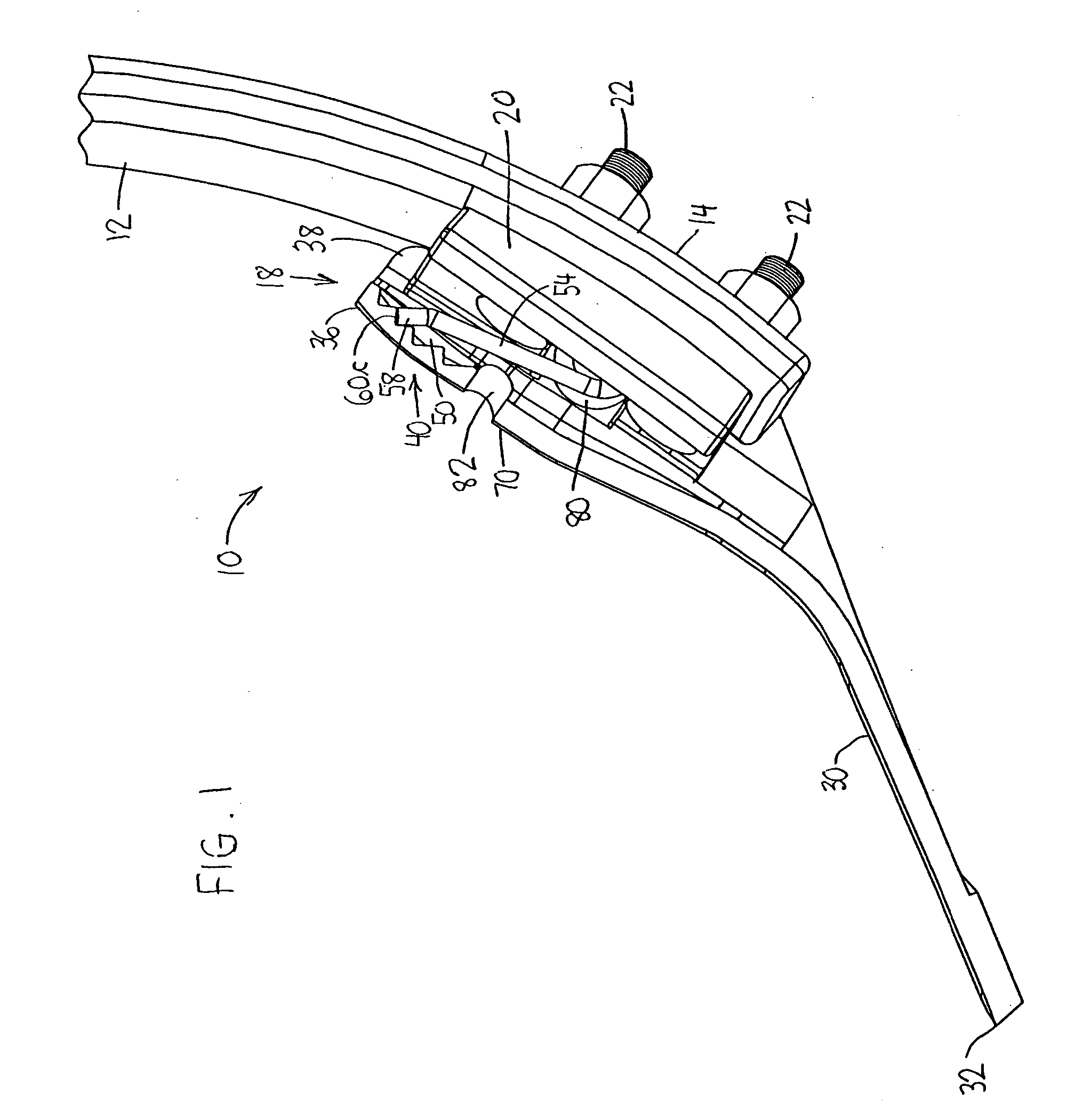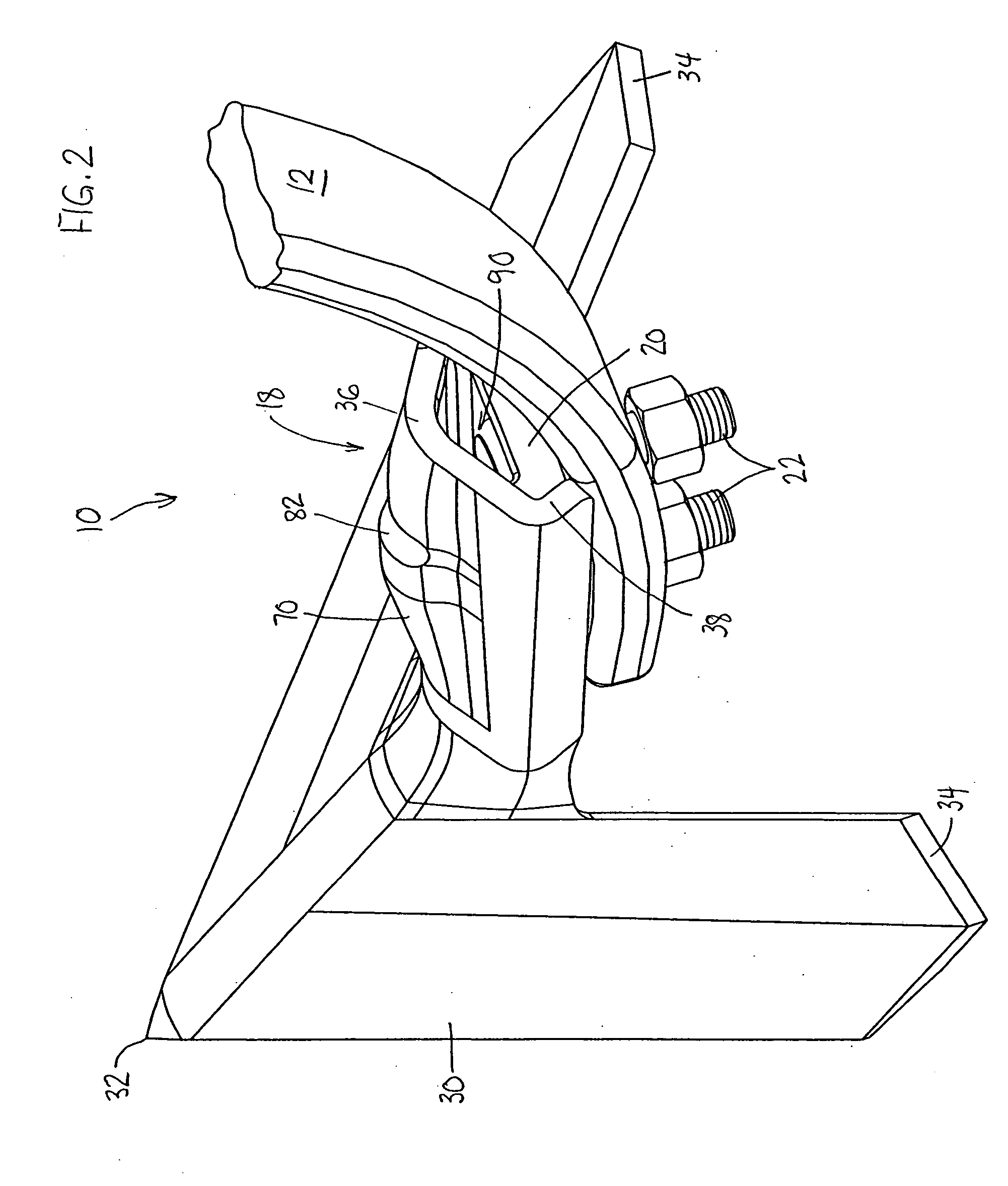Knock-on sweep structure
a technology of retaining structure and screw, which is applied in the field of tillage tools, can solve the problems of affecting the operation the retaining device has suffered from one or more bolts, and the bolts must be removed, etc., and achieves the effect of improving the retaining structure of the retaining device, simple and inexpensive manufacturing and assembly, and reliably holding the retaining devi
- Summary
- Abstract
- Description
- Claims
- Application Information
AI Technical Summary
Benefits of technology
Problems solved by technology
Method used
Image
Examples
Embodiment Construction
[0018] Referring now to FIG. 1, therein is shown the lower portion of a spring trip shank assembly 10 including a shank 12 having a lower tool-mounting end 14 supporting a knock-on sweep assembly 18. The assembly 18 includes a wedge-shaped adapter bracket or sweep support 20 having an aft face conforming to the forward face of the end 14. The support 20 is secured to the end by two plow bolts 22 extending through apertures in the sweep support 20 and corresponding apertures in the end 14 of the shank 12. An earthworking tool 30, shown as a cultivator sweep in FIGS. 1 and 2, includes a forwardmost tip or point 32 and opposed wing portions 34 diverging outwardly in the rearward direction. An downwardly and rearwardly concave sweep mounting portion or stem 36 includes edges 38 which wrap partially around the sweep support 20. The stem portion 36 provides a wedge fit between the tool 30 and the lower end 14 of the shank 12 when the tool 30 is urged upwardly onto the sweep support 20. Th...
PUM
 Login to View More
Login to View More Abstract
Description
Claims
Application Information
 Login to View More
Login to View More - R&D
- Intellectual Property
- Life Sciences
- Materials
- Tech Scout
- Unparalleled Data Quality
- Higher Quality Content
- 60% Fewer Hallucinations
Browse by: Latest US Patents, China's latest patents, Technical Efficacy Thesaurus, Application Domain, Technology Topic, Popular Technical Reports.
© 2025 PatSnap. All rights reserved.Legal|Privacy policy|Modern Slavery Act Transparency Statement|Sitemap|About US| Contact US: help@patsnap.com



